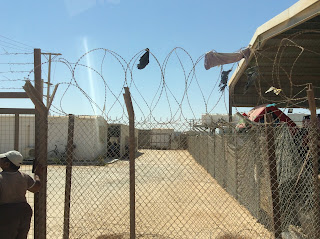Closing the Gap between Syrian Refugees’ Demand & Supply of Higher Education : 2- Current Efforts
Scholarships
According to a UNHCR policy briefing (2015) numerous scholarship programmes at higher educational level have been made
available to refugees in their countries of asylum, as well as in third
countries, particularly in the European Union. However, the total of all
available scholarships for Syrians promised since the start of the crisis, does not exceed several thousand;
consequently leading to a huge gap between the opportunities provided and actual
demand, remembering that the demand reaches hundreds of thousand eligible youth
for HE.
All-virtual learning mode
According
to Moser-Mercer (2014) from the University of Geneva, students’ engagement with
all-virtual courses in fragile contexts cannot be described as regular, nor
sufficient. In those contexts, set learning outcomes are usually not met and
learners simply drop out. (Moser-Mercer, 2014) . A landscape review conducted
to study HE potentials in low resource environments observed that most of those
programmes do not have sufficient processes in place that would help the
educators to understand the individual context of the learner. Additionally,
there are not consistent technical support processes to address the usually
limited ICT competencies and needs (Gladwell et al, 2016).
Information sharing portals
This
modality is mentioned here, despite the fact that it does not provide HE per
se, because of the tremendous effort exerted by the international community to
build a series of those informational portals to support SRY. Those portals aim to provide
support, advice and guidance beside
providing information about opportunities. Examples of those programmes are
Higher Education Alliance for Refugees (HEAR), AlFanar Media with its
scholarship searchable database, and UNESCO’s Jami3ati.

Comments
Post a Comment